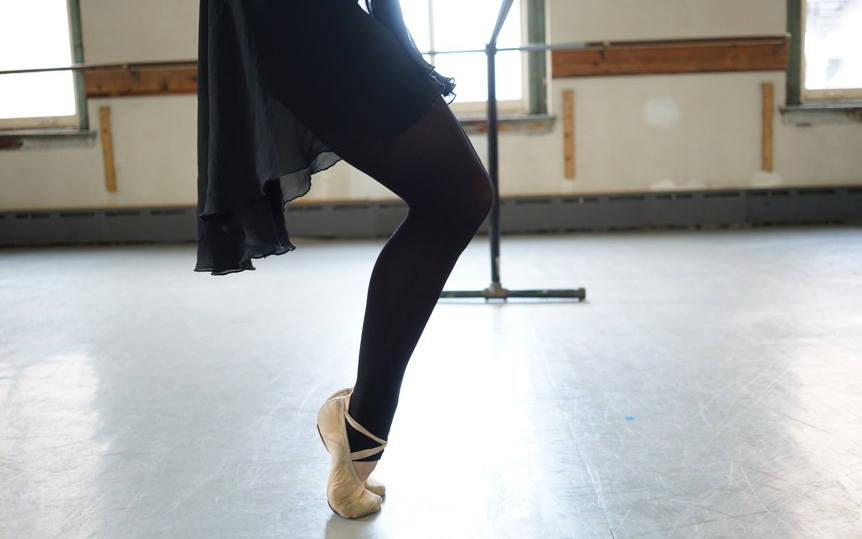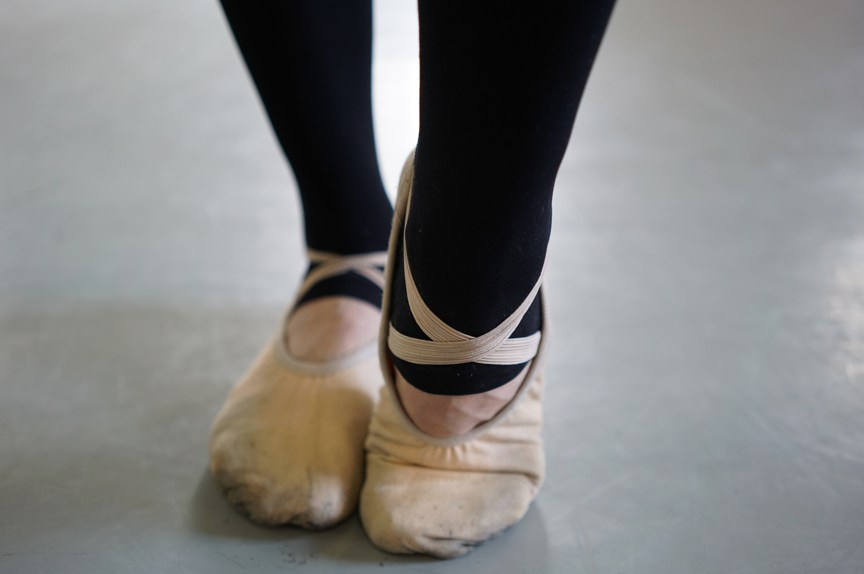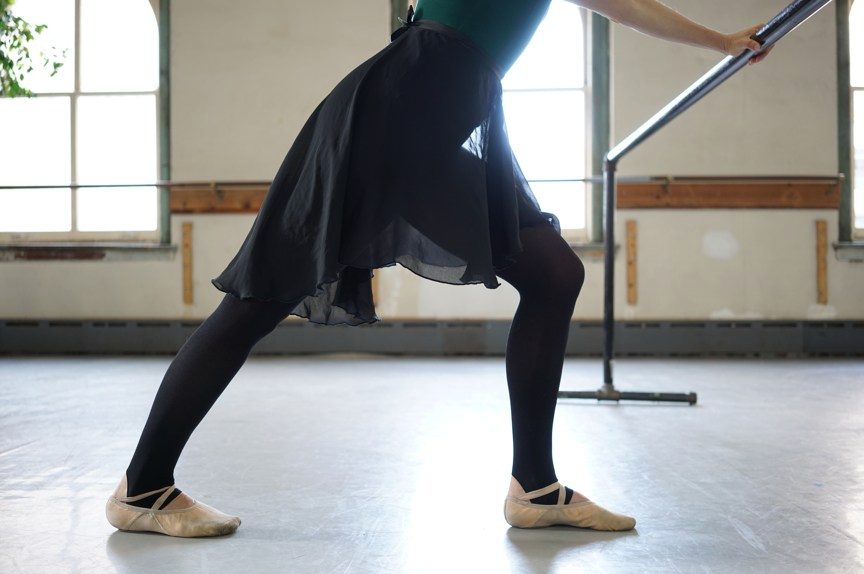Strengthening Ankles and Calves
Weak ankles can be a problem for a lot of dancers, and particularly if you have very flexible feet, your ankles may lack stability. Ankle strength can help your balance, can help prevent injuries, and helps dancers enormously with take off and landing jumps and turns.
If you have weak ankles you may unconsciously hold yourself back because your foundation feels unsteady. I found this to be true of myself when I was recovering from an ankle injury. If my ankles felt wobbly, I didn’t feel confident going for multiple turns or relevés on one leg or even jumps sometimes. Maybe you’ve noticed for yourself that you hold back or dance tentatively or even overcompensate by tensing your shoulders or biting your lips. If you are insecure physically, it can affect you psychologically. The good news is, strengthening your ankles may help you become a better dancer overall.
Here are some excercises to strengthen your ankles and calves. (Disclaimer – I am not a doctor or a physical therapist, I am a dancer and teacher. If you feel pain doing these exercises besides just muscle soreness, do less, go easy, or if you are injured, seek the advice of a professional.)
1. Ankle Raises or Elevés Hold on to a barre or a wall (or the kitchen counter) and put your feet together with the inside edges of your feet touching. Keeping your legs straight, press the balls of your feet down as you lift your heels off the floor as high as they will go (this is called an elevé-like an elevator) Then lower your heels evenly back down to the floor. Be sure to keep your feet and heels and legs together (if you can) as you do this. Think of your weight going right down between your first toe and second toes. This can help keep your ankles in alignment. Start with ten slow elevés. Going slowly and minfully is far more challenging than speeding.
2. Plié Over Lifted Arches Rise to the balls of your feet and keeping your legs together, bend your knees in a shallow demi plié. As you bend your knees, keep the arches of your feet lifted and your heels extending as high as they will go. Keep your ankles and knees together as you straighten your legs. Be sure your toes are relaxing on the floor. Bend and straighten ten times.

3. Heel Drop Bend your knees just like you did in the previous exercise but instead of straightening your legs, stay in that bent knee position, and lower your heels slowly and smoothly to the floor. Then lift your heels back up again as high as they will go with the same slow evenness. Try to control the movement of your heels as much as you can and move them smoothly without jerking. This exercise strengthens muscles particularly useful in petite allegro and other small fast footwork. Lower and lift your heels ten times.
4. “Walking” in Place Rise to the balls of your feet then lower your left heel, bending the right leg and coming the the ball of the right foot with your heel lifted as high as it will go. Rise back to the balls of both feet and reverse, this time lowering the right heel and bending the left leg. Continue to rise and lower one heel – ‘walking’ back and forth. This can a nice warm up for your feet. Be sure your heels ‘kiss’ as they pass – don’t let them separate out to the sides.

5. Plie Releves A relevé (which means ‘raised’) is like an eleve, but instead of with straight legs, releves start and end with a demi plie, but it is also a rise up onto the balls of the feet or to the pointes of point shoes. Relevés are like the push-ups of ballet. They strengthen your legs, particularly your calves and ankles.
To do a releve, demi plié. Begin to straighten your legs, and as you do, press the balls of your feet down and lift your heels off the floor, until your legs are completely straight and your heels are lifted as high as they will go. Then lower your heels to the ground as you demi plié. Relevés are done in all positions of the feet and on two feet or one foot. After doing some releves with your feet parallel, open your toes to first position and repeat the releves in first position.
Reminders:
- Relax your toes and spread them wide on the ground as you rise to the balls of your feet.
- Make sure your weight is centered in between your first and second toes. If your weight is more in your pinky toes, you may be sickling your ankles. Line up your bones.
- Remember that your turn out comes from your hips. In first position be sure to rotate your inner thighs forward and imagine your legs lengthing down out of your hips. At the same time, imagine your heels coming forward as your heels lift.
- Alignment is key. Remember to lengthen your lower back towards the floor as you lift your lower belly in and up. Relax your front ribs and imagine a string pulling you up from the back of your head. Your upper body should stay lifted and not move around as your legs plié and relevé.
- It may help to imagine you have a unicorn horn coming out of your forehead and imagine your energy going forward and up. This helps prevent your ribs from splaying and your weight from going backwards.
- Be sure you are lifting your heels as high as they will go. Extend your ankles fully.
- Relevés are like slow motion jumps, which also start and end in plié and have straight legs and fully extended ankles at the top of the movement. Releves are great preparation and training for jumps.
Doing these exercises and doing relevés at the barre on two feet and one foot will improve your strength and stability for when you move to center floor.
Now that you have worked them out, stretch your upper calves (gastrocnemius) and achilles – the tendon at the back of your ankle. Bring your feet parallel and slide you right foot back a foot or two and bend the front knee. Push into the wall or barre (or kitchen counter) to increase the stretch.

Then bring your back foot in a little bit and bend the back foot as well to stretch the lower portion of your calf (soleus) and achilles. You can also get a nice stretch in you calves by lowering your heels off a stair step.

Any question? Just ask in the comments below and let me know if any of this helps you over time. Stronger ankles makes stronger dancers. See you in class!
~Sarah
Please see the Classes page for my current teaching schedule. I’d love to see you at the barre!


Great article!
LikeLiked by 1 person
Thank you!!!
LikeLike
Great post! I am a dancer and I have enjoyed reading through your posts. XD
LikeLiked by 1 person
Thanks Maddy!
LikeLiked by 1 person
You might like the photo I posted for the blog about Finding Balance
LikeLike
I just checked it out.. it’s a gorgeous shot!
LikeLiked by 1 person
Thank you! Your Sunset photo has the same light.
LikeLike